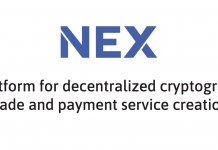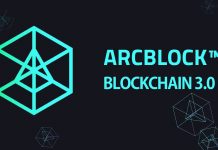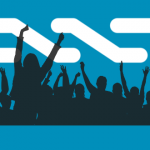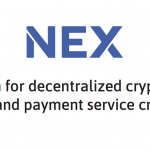PROJECT OVERVIEW.
Polkadot is a blockchain technology, a heterogeneous multi-chain. It’s a system intended to enable scalability and interoperability, which are two of the main issues facing blockchain protocols today. In a future in which entire industries and economies rely on distributed technologies, Polkadot will allow blockchain networks to support massive amounts of data, and exchange transactions in a trusted way.
Polkadot allows diverse kinds of blockchains (or parachains) to interoperate within the same consensus network. This enables a new level of freedom and protection. Innovative new technologies can be quickly integrated, and divisive hard forks can become a thing of the past.
For example, conservative, high-value chains similar to Bitcoin or Z-cash co-exist alongside lower-value “theme-chains…” and test-nets with zero or near-zero fees. Fully-encrypted, “dark”, consortium chains operate alongside, and even provide services to, highly functional and open chains such as those like Ethereum. Experimental new VM-based chains such as a subjective time-charged Wasm chain can be used as a means of outsourcing difficult compute problems from a more mature Ethereum-like chain or a more restricted Bitcoin-like chain.
Scalability is achieved through the parallel processing of transactions on the different parachains; Transactions can be spread out across the chains, allowing many more to be processed in the same period of time.
BACKGROUND.
A future of multiple blockchain networks is increasingly likely. A Web 3.0 architecture of buzzing public blockchains, private consortium ledgers, anonymous zero knowledge proof chains and all the countless applications running on top of each of them. Not one chain to rule them all, but a world of diversity where individual chains serve specific use cases and specifications.
While a public blockchain can operate in a decentralized manner within its own network it still remains severely isolated towards others. Without third-party APIs a blockchain is only able to send data and assets within its own network. Currently, centralized exchanges remain the only mechanisms to transfer values between networks. Smart contract systems like BTCRelay provide innovative solutions but remain complex one-way communication paths.
Ideally, applications and smart contracts being developed on systems like Ethereum should be able to transact seamlessly with assets and data on other ledgers in order to achieve the scale the industry is hoping for.
Enter the Polkadots. Throughout the past eight years, different blockchains have introduced different specifications. Bitcoin introduced the notion of trusted accounting and transactions. Ethereum introduced a decentralized world computer. Polkadot is the internet of blockchains. An inter-chain.
Polkadot is a relay mechanism that facilitates authenticated transactions from one blockchain to another. The idea is to parallelize chains that want to join Polkadot and create parachains.
HOW IT WORKS.
Under the hood, Polkadot works by decoupling two vital components of a blockchain network: state transition and consensus. In the Ethereum network, state transition is controlled by the EVM, whereby state is updated by applications making changes to smart contracts. The consensus portion means that once some data is written to a smart contract, then the change must be sent to everyone in the network so that it can be added to the chain. Updating the state and ensuring the transition is valid is computationally intensive, while the consensus portion is not very computationally difficult but requires communication and broadcasting information to other nodes.
By decoupling these two vital functions, Polkadot increases efficiency and allows computationally difficult tasks to be done in parallel on a sub-set of the network specializing in computationally intensive tasks, called parachains, and then allow the network to synchronize all these constituent chains by communicating with each other, with what is called a relay chain.
The relay chain connects through all of the parachains. It also facilitates the finalization of transactions. This is paramount because it would be impossible to move a message from one chain to another without achieving finality. Parachains lose the function of finality and they gain the ability to communicate. But most importantly they retain the sovereignty of confirming their own validity.
Parachains are designed as extensible elements that can be plugged into the relay chain as validatable, globally coherent data structures.
USE CASES.
- Linking private to public chains (e.g. IBM Hyperledger contracts calling others contracts living on the Ethereum public chain and then proceeding based on the returned results). One certainly cannot have a direct stake in the private blockchains themselves but can now participate in the framework that will allow those blockchains to exchange information.
- Multiple public chains interacting and leveraging each other’s functionality, for example you could have a decentralized exchange protocol by which a user could deposit Ethereum anonymously using the zero knowledge proofs of the Zcash chain.
- Allowing cross chain value transfers (e.g. sending Zcash to the bitcoin network, or ether to the bitcoin network).
- Smooth migration to newer/better chains : tired of current chain? Just “transition” to the new kid on the block (chain).
- Access to the execution of complex operations currently unavailable on existing platform due to constraints such as missing support for floating point arithmetic operations.
- Direct access to oracles and other authenticated data feeds for smart contracts.
HOW ADVANCED IS THE PROJECT?
The project is very much at an inception stage, but Parity Technologies has already been prototyping the underlying consensus algorithm and laying some of the groundwork for the proof-of-validity stuff. The initial research was funded by the British Government under the Innovate UK programme with further development to be funded by Melonport AG, a new start-up co-founded by Mona El Isa, former Goldman Sachs trader and hedge fund manager.
El Isa aims to automate paperwork and other aspects of non-trading asset management through the use of smart contract technology by launching Melon, a hedge fund like system for wealth management, which will probably be one of the first interoperable chain with Ethereum’s public network as Polkadot will include a backwards-compatibility layer with the current Ethereum network, allowing smart contracts on Ethereum to interact directly with any chains.
Bitcoin can also be interconnected but it would require a two-way peg, which is a non-trivial undertaking, a hardfork, which in Bitcoin is difficult to arrange to say the least or a virtual parachain to stand between the two networks, but that would require a substantial effort with an uncertain timeline and quite possibly requiring the cooperation of the stakeholders within that network.
The focus, therefore, is likely to be mainly on interconnecting Ethereum’s public blockchain with other private blockchains as well as, perhaps, eventually, with other public networks.
DOT TOKEN USES.
- As a measure of stake within the network.
- As for payment for certain kinds of operations within the system such as the bonding of commercial chains.
- DOT tokens also provide holders with a voting stake to add, remove or modify existing parachains, as well as participate in governance decisions of the protocol.
SIMILAR PROJECTS.
Cosmos.
With countless blockchains, both public and private in existence, interoperability remains an unsolved problem. Assets on one blockchain generally can’t be moved to other chains and exchanging assets on different blockchains requires going through a centralized intermediary.
The Cosmos project aims to change that by creating an internet of blockchain that connects different chains through the Inter-Blockchain Communication (IBC) protocol. Interoperability is achieved through the shared Cosmos Hub, powered by the Tendermint consensus protocol, that keeps track of the number of tokens in each connected chains and manages transfers between them.
Cosmos is set to become a decentralized exchange.
How is Polkadot different than other platforms in the space?
Cosmos and other ‘existing’ cross-chain solutions are considerably simpler from a design standpoint, and therefore less likely to have bugs and/or delays in their deployment. But simply put, Cosmos and others focus on value transfer between chains. Polkadot, on the other hand, is more generalized to allow for cross-blockchain interactions between disparate smart contracts.
There are many uses cases, especially in the IoT space, where the main challenge is transferring data and executing function calls between platforms. For example, I might want to find, from an Ethereum smart contract, the GPS coordinates of a given object that’s registered on Hyperledger.
The second benefit of Polkadot over these solutions is its shared security model. As a developer for instance, you would much prefer to focus on delivering value add to your customers in the form of feature set, and not having to worry about hitting the correct threshold of mining power. Cross chain solutions cannot help you here, but Polkadot can.
Polkadot allows for an easy solution to scaling by allowing multiple chains to share the same security layer without having to accrue mining resources themselves (the main challenge to the simplest chain scaling solution), AND without having to resort to merge-mining either. Simply put, it provides pooled security that is equal to all members, regardless of the protocol they operate on.























